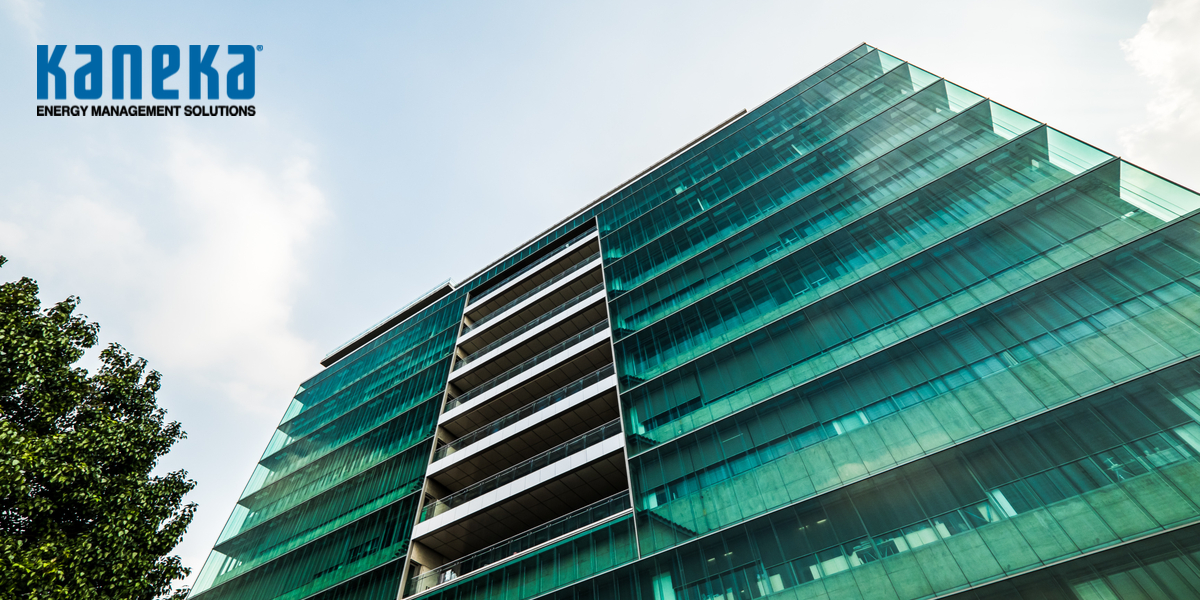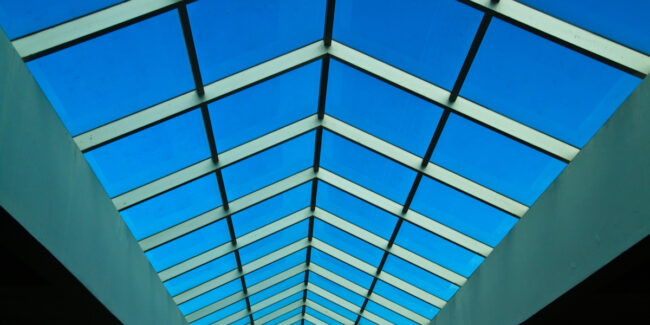
Did you know that up to 70% of energy loss in buildings occurs via windows and doors—and that most of it happens through the glass? Whenever you’re considering installing new windows or doors in your commercial space, there is a lot more to think about than just aesthetics. The types of materials you choose can have a significant impact on the efficiency of your windows and doors.
Low-E glass is becoming a more popular choice among windows and doors because it offers energy-saving structures without sacrificing quality or clarity. But is low-E worth it, and should you use it for your business?
Keep reading to learn more about this product and how it works to decide whether it’s right for your commercial building.
What is Low-E Glass?
The “E” in low-E glass stands for emissivity, or the amount of energy radiated from a surface. Emissivity is measured from 0 to 1, with 0 being a reflective mirror and 1 being a fully blacked-out surface.
In other words, low-E glass radiates less energy, allowing it to transmit less heat.
How Do Low-E Glass Windows Work?
Low-E insulated glass creates better heat insulation for a building. The heat coming from the sun or your building’s HVAC system will “bounce” off the low-E glass and go back into your building, rather than permeating through the glass to the outside. It accomplishes this process because of the exceptionally thin layers of metallic coating on the glass.
Unlike tinted windows, low-E glass creates a sort of filter for certain energy wavelengths that allow light through without losing out on heat. Tinted windows only block out shorter wavelengths (light), but low-E coating glass allows shorter wavelengths through while also filtering out long wavelengths (heat).

Understanding the Pros and Cons of Low-E Glass
No invention is perfect, and low-E glass comes with various benefits and some drawbacks.
Advantages of Low-E Glass
The most obvious perk of low-E glass is its ability to reduce energy loss. When installed properly, it can reduce heat loss in buildings by as much as 50%. In addition, low-E glass provides:
- Durability – The metallic coatings are inside the glass, making it more durable
- Invisibility – The additional layerings are not visible to the human eye
- Protection – UV rays cannot penetrate the glass, protecting objects and people
Over time, these benefits create cost savings for building owners who invest in low-E glass windows and doors.
Disadvantages of Low-E Glass
The most significant disadvantage to low-E glass is its upfront cost. Because there are more steps and materials in the manufacturing process, low-E glass costs more to produce.
Fortunately, it can still be seen as a long-term investment, as the technology noticeably improves a building’s energy efficiency and lowers electricity bills.
Another potential disadvantage of low-E glass is that it does block a certain amount of natural light from entering a space when compared to standard glass or fully open windows. However, commercial building owners may consider this to be an advantage in some settings, as it allows for UV protection.
Factors to Consider When Choosing Low-E Glass
There are a variety of low-E glass options to consider when you’re making an investment in your commercial building. The most important factor to keep in mind is the kind of climate that the building is located in. You’ll have to think about whether keeping your building cooler during the summer or warmer during the winter is more important.
With the right combination of low-E glass windows and doors, you can achieve both. In general, though, passive low-E coating glass is better for more northern geographical locations, while solar control low-E glass is more appropriate for southern locations.
Kaneka Photovoltaics Provides Energy-Saving Solutions in Houston, Texas
If you’re looking to lower your building’s energy consumption, consider Kaneka’s dual-function building materials. Kaneka Photovoltaics is dedicated to providing high-quality energy management solutions to all of our clients.
Contact us online today to learn how we can incorporate cool roof and bi-facial technology into your next building project.
Integrate energy generation into your building today with Kaneka!